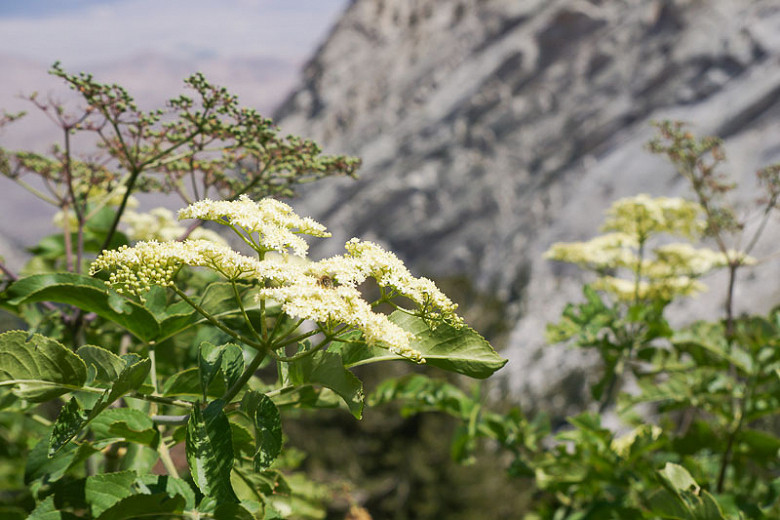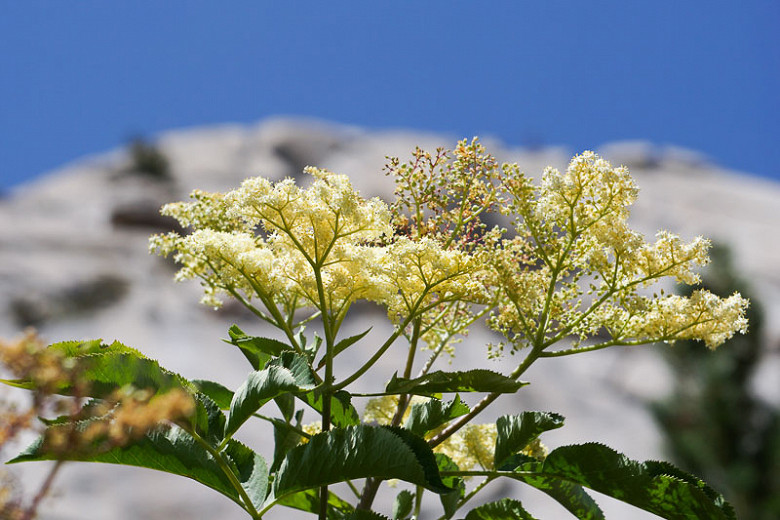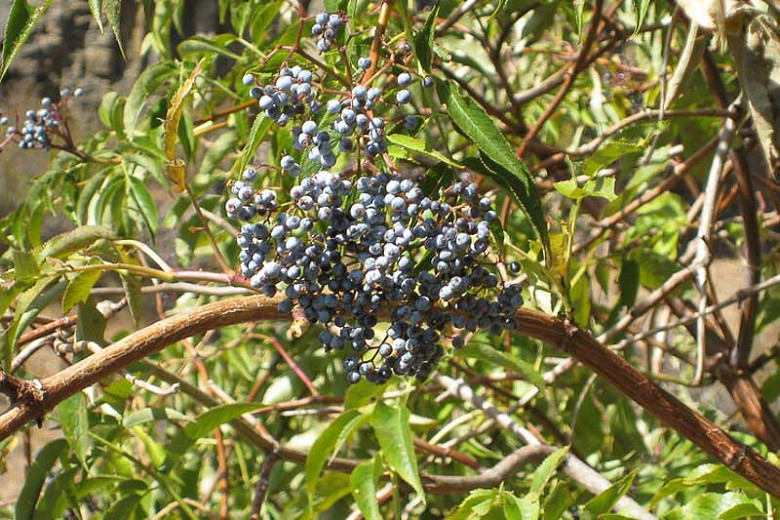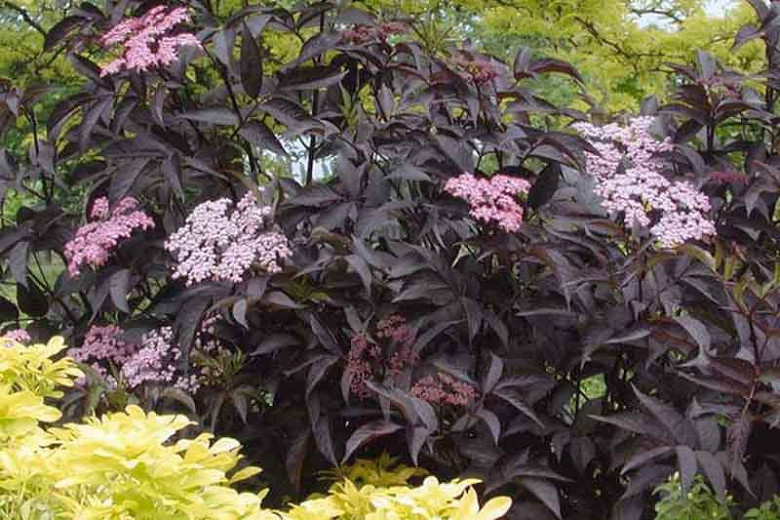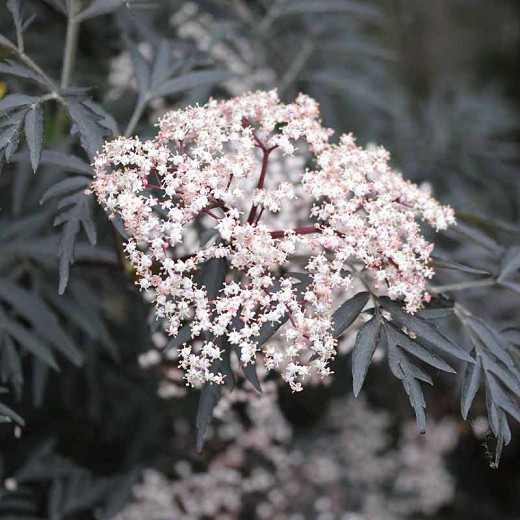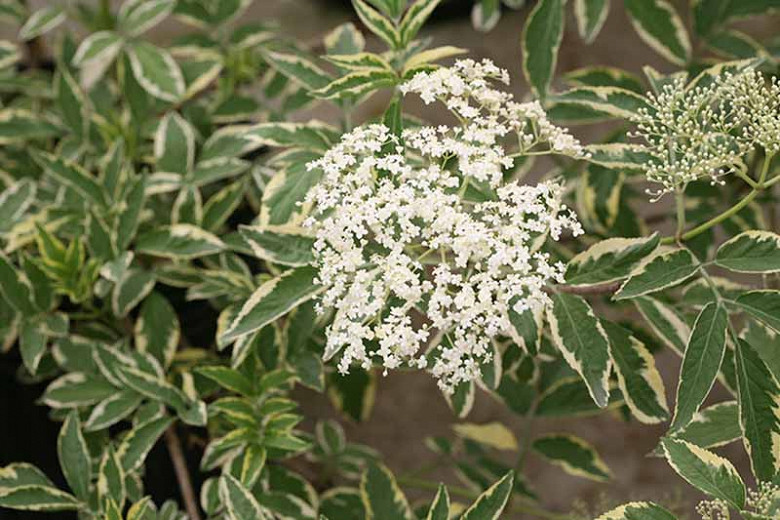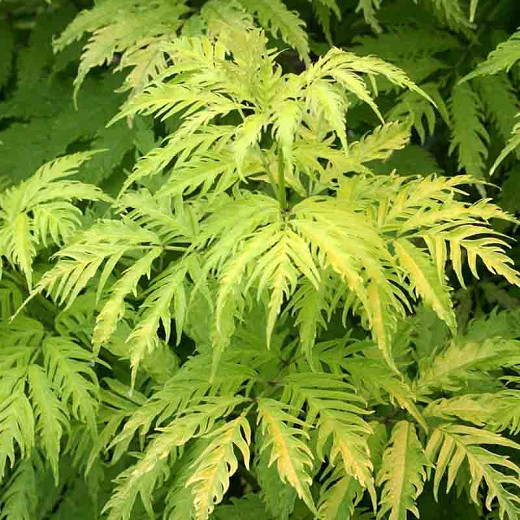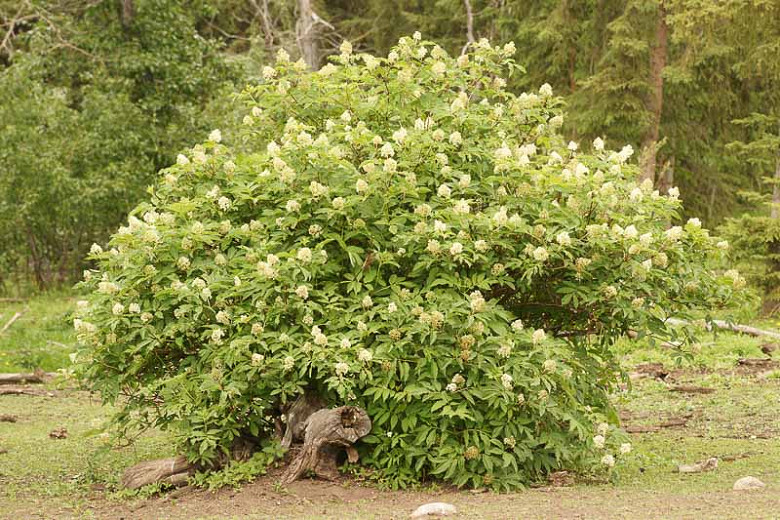Sambucus nigra subsp. caerulea (Blue Elderberry)
Tough, easy to grow, fast-growing, and adaptable, Sambucus nigra subsp. caerulea (Blue Elderberry) is a large, deciduous shrub or small tree adorned with flat-topped clusters, 8 in. across (20 cm), of fragrant, creamy flowers from spring to fall. The charming blossoms contrast nicely with the foliage of pinnately compound, medium green leaves and give way to edible berries later in the season. The berries are covered with a white, waxy bloom, making them appear blue when fully mature. They are quite delicious when used in preserves and pies, but should never be eaten when fresh and raw. Native to mountain areas in western North America, Blue Elderberry is typically found along streams, irrigation ditches, and other riparian corridors. It also grows in chaparral, sage scrub, grassland, and wetland-riparian habitats. Blue Elderberry provides great value to wildlife. It attracts many bird species and is one of the most important sources of berries for birds in California. It provides cover for many small mammals, birds, and insects. It is deer resistant and attracts a variety of butterflies and bees. Planted as an ornamental for the profusion of creamy flowers and blue fruits, Blue Elderberry is also a great restoration plant because it is tough, easy to grow, and can handle a variety of different soil moisture levels.
- Grows up to 20-30 ft. tall and wide (6-9 m). Spreads by root suckers to form colonies.
- Performs best in full sun or part shade in medium to wet, well-drained soils. Tolerates full shade, but will look rangy and produce fewer flowers and berries. Tolerates a variety of soils and moistures. Once established, it can grow well in fairly dry soils. Some drought tolerance.
- Excellent choice as a single specimen plant, informal screens or hedges, shrub borders, naturalized areas, open woodland gardens, and near ponds and streams.
- May be subject to canker, powdery mildew, leaf spot, borers, spider mites, and aphids.
- Branches are susceptible to damage from strong winds or heavy snow in winter.
- Propagation from seed is more reliable and contributes to genetic diversity. Propagation from cuttings may be more difficult but increases consistency and predictability.
- Prune out dead or weakened stems and shape in late winter. Prune suckers unless naturalizing is desired.
- All parts except mature fruits are mildly toxic. Fruits are edible when cooked. Toxic to humans.
- Native to the Western United States, northwestern Mexico, and British Columbia. It is found from the Pacific coasts, through California and the Great Basin, to Montana, Wyoming, and Texas.
Requirements
| Hardiness | 4 – 9 |
|---|---|
| Heat Zones | 6 – 8 |
| Climate Zones | 2, 2A, 2B, 3, 3A, 3B, 4, 5, 6, 7, 14, 15, 16, 17 |
| Plant Type | Shrubs, Trees |
| Plant Family | Sambucus – Elder |
| Exposure | Full Sun, Partial Sun |
| Season of Interest | Spring (Early,Mid,Late)Summer (Early,Mid,Late)Fall |
| Height | 20' – 30' (6m – 9m) |
| Spread | 20' – 30' (6m – 9m) |
| Spacing | 240″ – 360″ (600cm – 900cm) |
| Water Needs | Low, Average, High |
| Maintenance | High |
| Soil Type | Chalk, Clay, Loam, Sand |
| Soil pH | Acid, Alkaline, Neutral |
| Soil Drainage | Moist but Well-Drained, Well-Drained |
| Characteristics | Showy, Fruit & Berries |
| Native Plants | United States, California, Pacific Northwest, Idaho, Oregon, Washington, Rocky Mountains, Colorado, Montana, Utah, Wyoming, Southwest, Nevada, Arizona, New Mexico, Texas |
| Tolerance | Clay Soil, Deer, Drought, Wet Soil |
| Attracts | Bees, Birds, Butterflies |
| Garden Uses | Beds and Borders, Hedges and Screens, Ponds and Streams |
| Garden Styles | Coastal Garden, Informal and Cottage |

